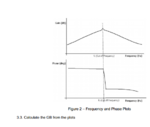Follow along with the video below to see how to install our site as a web app on your home screen.
Note: This feature may not be available in some browsers.
Hi LvW,
Thank you very much for your answer i will trying solving it and let you know the result ASAP.




In the Transfer Function A is the Open loop Gain and its equal to GB/s where GB is Gain Bandwidth Product
Hope i have given you all the details
but i have another doubt, why A=GB/s? in low frequency, A is almost constant, above p1(dominant pole), it is about GB/s. right?
also i found that GB for TL082 under typical conditions is 3 mHz from its datasheet
when i simulate the circuit i get around 14.800 mHz is that right or i have done something wrong